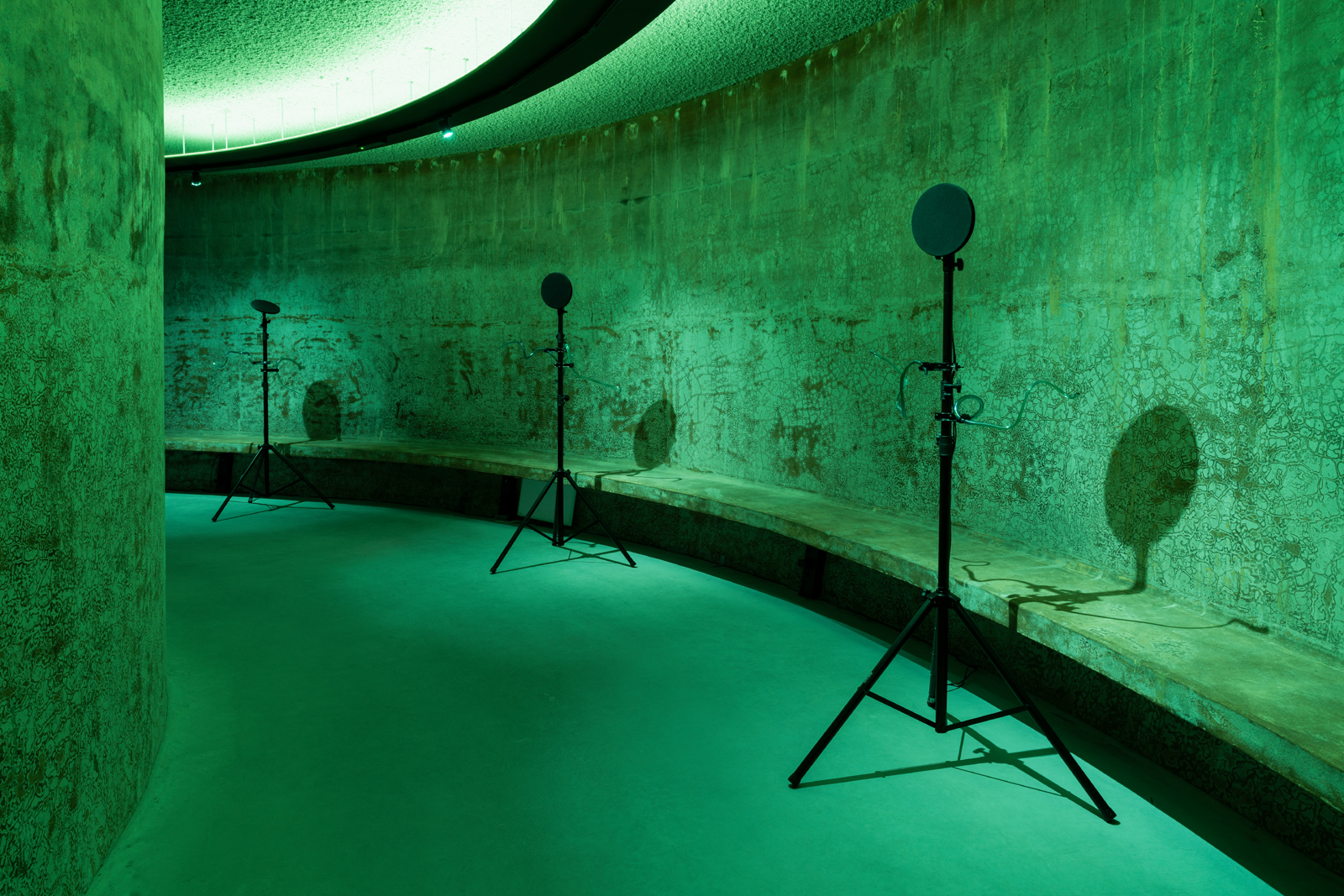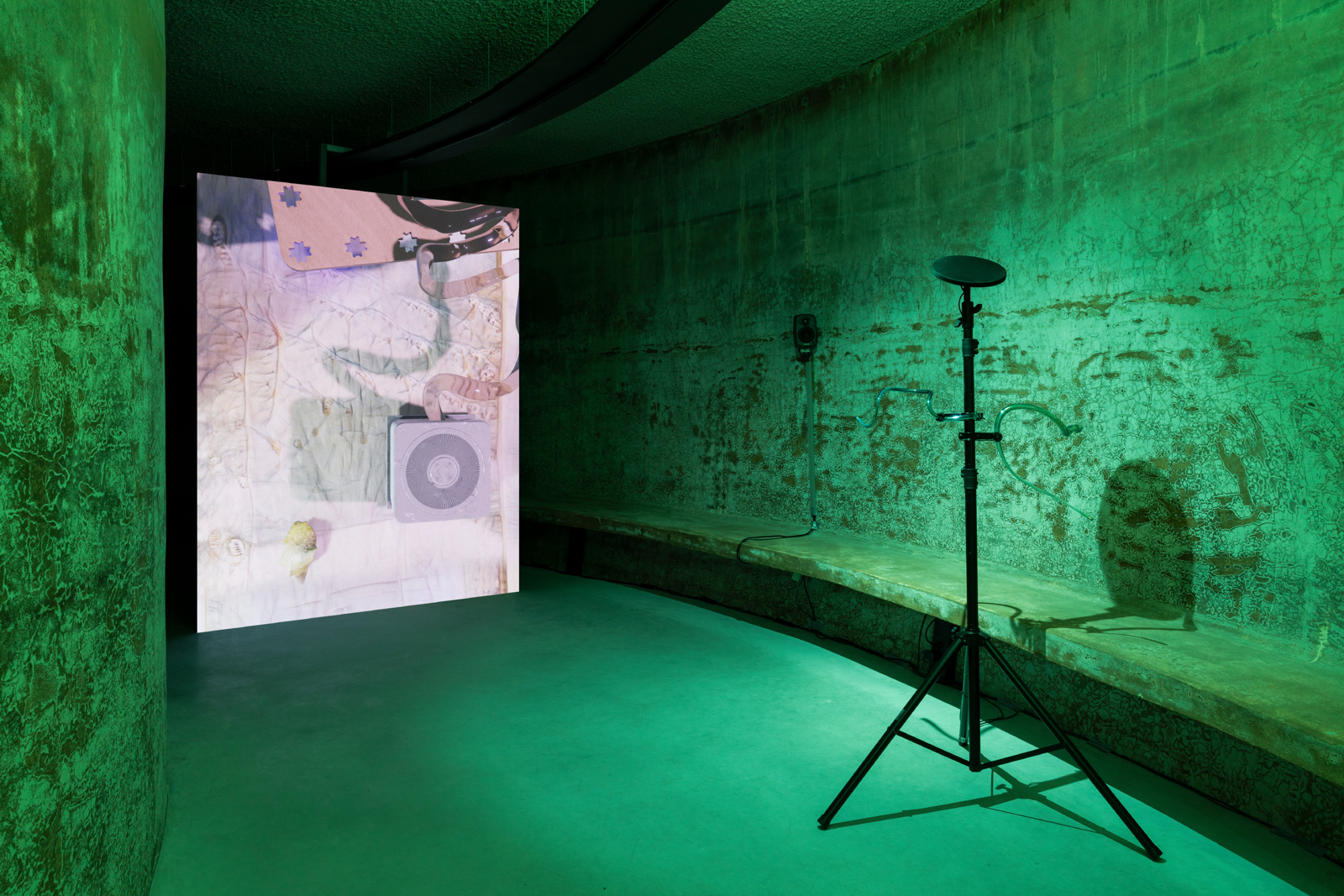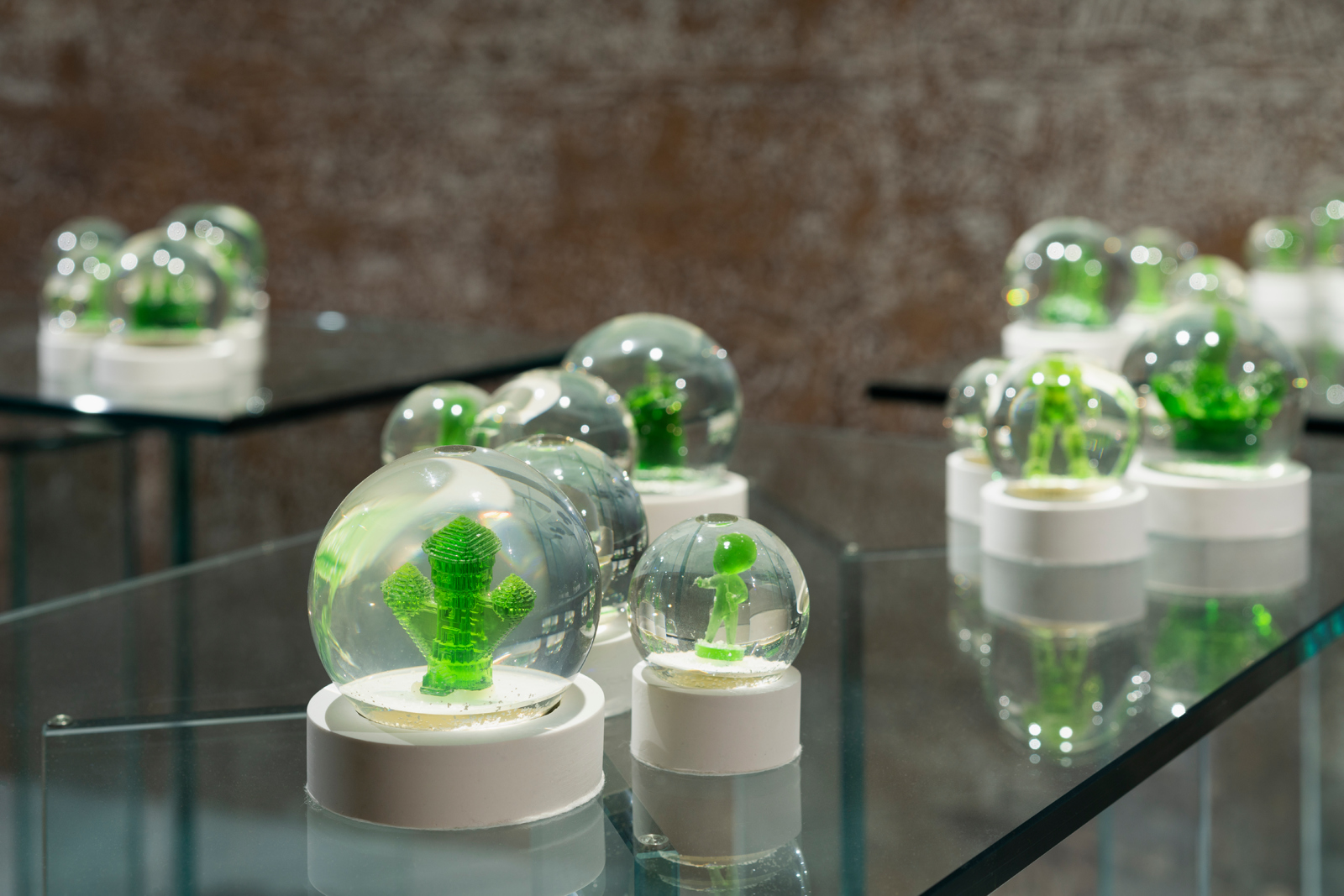10 December 2022 – 12 February 2023
Underland Chapter 4
CALM BEFORE THE STORM
Participating artists:
Edward Clydesdale Thomson, Armando D. Cosmos, Tuomas A. Laitinen, Jumana Manna, Neda Saeedi, Emilija Škarnulyté, Elisa Strinna, Jun Zhang
CALM BEFORE THE STORM is the fourth and final exhibition of the UNDERLAND year program. The eight artists in this group exhibition provide insight into the need for preservation and shelter when living environments become progressively volatile and unpredictable. How can humanity implement science, technology, creativity and ingenuity to resist ecological breakdown? And, how can artistic and design practices propose ways of living in the Anthropocene, in consideration of all living organisms on Earth?
After the seed banks of Afghanistan, Syria, Iraq and the Philippines were lost to wars, floods and fires, the World Seed Bank was established in 2006 on Svalbard, a remote Norwegian archipelago of glaciers and frozen tundra. This seed bank, popularly nicknamed the Doomsday Seed Vault or the Frozen Garden of Eden, is located deep within a sandstone mountain, and safeguards the largest variety of plant seeds in the world. The SGSV, nuclear waste storage bunkers, and other facets of so-called underground vaults culture exemplify the ways in which humans seek refuge when environmental breakdowns trigger more and more disastrous events.

Only one-third of the nuclear residue is repurposed as energy. The remainder is mostly stored in underground repositories. These repositories are designed to exist longer than humanity, as nuclear residue remains highly toxic for more than a thousand years. In the United States, however, these repositories are running out of storage space, and nuclear waste is already stored in the open-air, closer to human and non-human life, which significantly increases the threat of radioactive disasters.
As a solution to these risks, so-called doomsday luxury homes are being built in remote locations far away from nuclear targets, earthquake-prone zones, and dense urban areas where viral infections spread rapidly. Although these particular real-estate enterprises are thriving, the high-priced bunkers they sell do not offer any solutions, but only an illusion of time standing still. And besides, isn't it an example of Anthropocentrism when only the very rich can afford to be saved?
These real estate enterprises are not the only ones trying to escape the current climate regime instead of contributing to overcoming it. With his company Space X, Elon Musk is planning to populate Mars with one million people to establish a "free planet not governed by the laws of Earth." By intending to commodify the cosmos, advanced capitalism is turning science fiction into reality. As revolutionary such Post-Anthropocentric strategies may seem, they only advance the Anthropocene by making significant additions to its social, political, and ethical positions.
By intending to commodify the cosmos, advanced capitalism is turning science fiction into reality. As revolutionary such Post-Anthropocentric strategies may seem, they only advance the Anthropocene by making significant additions to its social, political, and ethical positions.

In popular post-apocalyptic fictions of alien invasions, zombie apocalypses, environmental disasters and technological singularities, contemporary societal, ecological, and political concerns are turned into tales of self-reliance. Structures of order have been destroyed and chaos has taken over. An exceptional few are trying to survive the turmoil. Often, unbearably white, heterosexual and cisgender heroes are the main characters, a narrative pattern sustained by Social Darwinistic notions of "survival of the fittest". The end of the world—which is different from the end of the Earth—is the end of modern civilisation. Ultimately, these stories revolve around human exceptionalism, which is paradoxical, since this is precisely the cause of many global catastrophes.
Educator and researcher Stephanie Wakefield argues that doomsday-driven fictions and enterprises rarely offer concrete approaches to overcome the current climate regime. Upon closer examination, they only seem to rush headlong toward supposed solutions. To work out the complexities of the ecological crisis, Wakefield claims that we ought to acknowledge that we are not only living in the Anthropocene, but also—and more specifically—in its "back loop": a time of release, fragmentation, and great potential for reorientation.

Not only Wakefield argues that the present age is characterised by enormous, far-reaching changes. The recently deceased philosopher, sociologist and anthropologist Bruno Latour also describes enormous shifts in cosmogonies—that is, models that provide explanations for the origin and development of the universe. Moreover, it is commonly suggested in philosophy and cultural studies that the modern world is coming to an end.
In this present moment of vast changes, we must reorient ourselves, and continue to speculate on new ways of living and assembling. What roles can art and science play in this? Guided by the speculative languages of the artworks, the final chapter of UNDERLAND offers insights for a better-equipped imagination in light of both current and future planetary transformations.
Curated by Niekolaas Johannes Lekkerkerk, assisted by Sergi Pera Rusca.
CALM BEFORE THE STORM is made possible with support from Gieskes-Strijbis Fonds, Mondriaan Fund, Municipality of Delft, FONDS21, BNG Cultuurfonds, Stichting Zabawas, ifa (Institut für Auslandsbeziehungen), and Frame Contemporary Art Finland.
The work of Armando D. Cosmos is loaned from The Ekard Collection.























